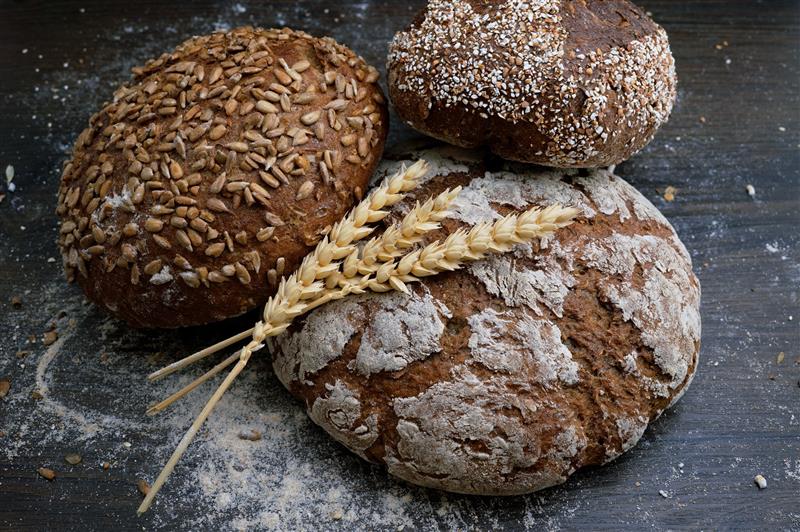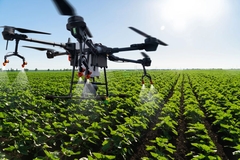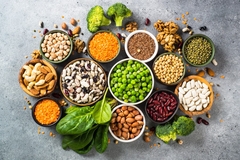Food insecurity in focus: Spiraling prices combine with climate shocks to create overwhelming conditions
07 Jun 2022 --- The food crisis deepens as a “perfect storm” of price surges, climate shocks, war, COVID-19 fallout and fragile agri-food systems continue to push certain countries to their limits. The situation severely impacts some global food supplies and erases years of progress toward eradicating world hunger.
This overlap of crisis conditions is leading to massive hunger risk in the poorest countries, crop shortages and predictions that it could get worse in the months ahead as inflation continues to bite.
“We’re facing a perfect storm that is not just going to hurt the poorest of the poor – it’s also going to overwhelm millions of families who until now have just about kept their heads above water,” warns WFP executive director David Beasley.

Globally, consumers are shouldering the weight of surging food basket prices, particularly impacting budget items like pasta, bread and chips. Nations are currently struggling with a spike in F&B costs not seen for years, made worse by rising energy rates.
“Conditions now are much worse than during the Arab Spring in 2011 and 2007-2008 food price crisis, when 48 countries were rocked by political unrest, riots and protests,” Beasley continues.
 Africa’s cereal yields for the year could decline from 20% to 50%.The worst drought in 40 years in Ethiopia and Somalia has already driven 286,000 people from their homes after crops failed and animals died. In Somalia, the number of people with acute food insecurity has almost doubled in a year – surging from 22% of the population to 38%.
Africa’s cereal yields for the year could decline from 20% to 50%.The worst drought in 40 years in Ethiopia and Somalia has already driven 286,000 people from their homes after crops failed and animals died. In Somalia, the number of people with acute food insecurity has almost doubled in a year – surging from 22% of the population to 38%.
In Ethiopia, the rise of acute food insecurity is almost as dramatic, going from 16% of the population to 30%, as seen in the “Hunger Hotspots” WFP/FAO report, published yesterday.
“We are deeply concerned about the combined impacts of overlapping crises jeopardizing people’s ability to produce and access foods, pushing millions more into extreme levels of acute food insecurity,” adds FAO director-general Qu Dongyu.
“We are in a race against time to help farmers in the most affected countries, including by rapidly increasing potential food production and boosting their resilience in the face of challenges,” he explains.
Egypt on the move to secure wheat supplies
Wheat production and availability continues to be in sharp focus with millions of tons still held up in Ukraine as Russia blocks ports. Despite pledging to help, EU and other world leaders have failed to come up with a concrete plan to get the grain moving.
Meanwhile, global markets scramble for wheat alternatives as shortages escalate, and cereal prices continue a relentless climb. The worst drought in 40 years in Ethiopia and Somalia has already driven 286,000 people from their homes after crops failed and animals died.
The worst drought in 40 years in Ethiopia and Somalia has already driven 286,000 people from their homes after crops failed and animals died.
Now, one of the world’s largest wheat importers, Egypt, has set its sights on securing its wheat supply. The country has relaxed its wheat import rules to allow higher moisture levels in wheat and facilitate imports from countries like Poland.
Furthermore, the food insecurity level in Egypt allows it to be considered an exception under the India wheat export ban, as the Asian country still supplies countries with dire food necessities.
Egypt considers wheat farming a matter of national security, with the government doubling its efforts and involvement. Nonetheless, the wheat harvest is delayed this year due to weather conditions.
Still, the Egyptian government doesn’t expect the delays to have further consequences in harvest yields.
In an African nations summit, Egypt called to boost farming production across the continent. As the African Union chair admitted that Africa’s cereal yields for the year could decline from 20% to 50%.
“The African continent has about 930 million hectares of arable land, and the population is about 1.3 billion, with 60% young people. Despite this, only about half of these arable lands are exploited,” says Dr. Al Syyed Al-Qaseer, minister of Egypt’s Agriculture and Land Reclamation.
According to a March Food Policy Research Institute study, Egypt’s annual state spending on wheat imports will double this year to US$5.7 billion. With the country seeking help from the International Monetary Fund to secure its finances.
EU keeps blaming Russia McDonald’s Japan, Malaysia and Indonesia suffered a french fry shortage, earlier this year.
McDonald’s Japan, Malaysia and Indonesia suffered a french fry shortage, earlier this year.
As European leaders continue their campaign to liberate food supplies from Ukraine , EU Council President Charles Michel has accused Russia of “stealing” grain from occupied areas.
“The Kremlin is using food supplies as a stealth missile against developing countries,” he says.
The EU Council president also points out how Africa is experiencing “an outsized share of the pain.” Last week the EU announced €2.5 billion (US$2.67 billion) funds for South Saharan Africa to support food-insecure populations and boost domestic food production.
Floods and supply chain
In Australia, floods have caused bad lettuce harvests, forcing KFC to use a blended mix of lettuce and cabbage on all its lettuce products.
“Due to the recent floods in NSW [New South Wales] and QLD [Queensland] we’re currently experiencing a lettuce shortage,” reads the KFC Australia website.
Earlier this year, before the Ukraine war, some KFC stores in the country had to juggle with the shortage of their key ingredient, chicken. As its main provider in the country, Inghan, faced staff shortages and supply chain issues due to the spread of the Omicron variant.
McDonald’s Japan, Malaysia and Indonesia also faced shortages in this case of potatoes earlier this year due to floods in Canada. Until airmail shipments could restore supplies, only small portions of fries were sold. The same floods also caused bad harvests of Dijon mustard, which propelled mustard prices upward.
By Marc Cervera













